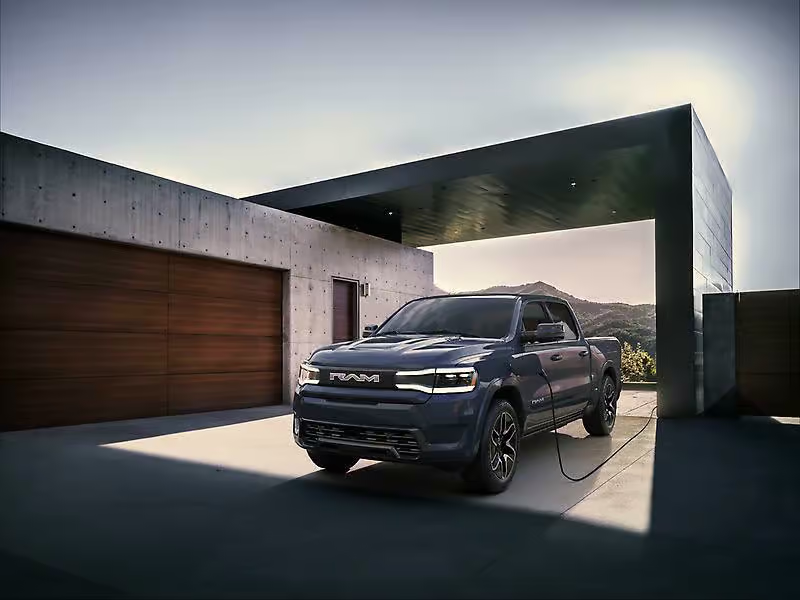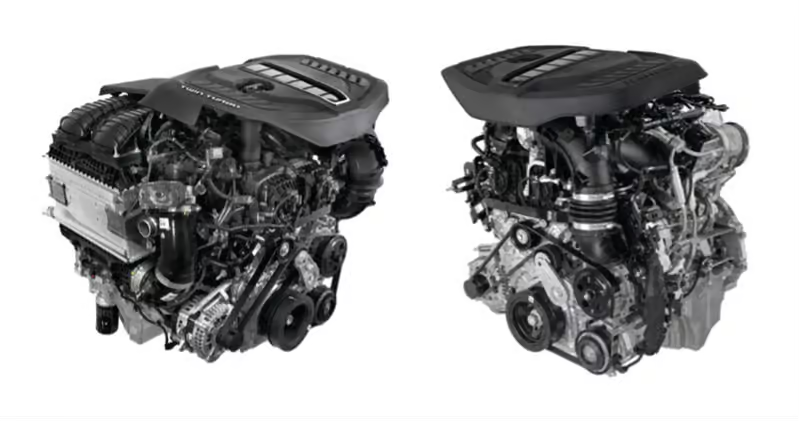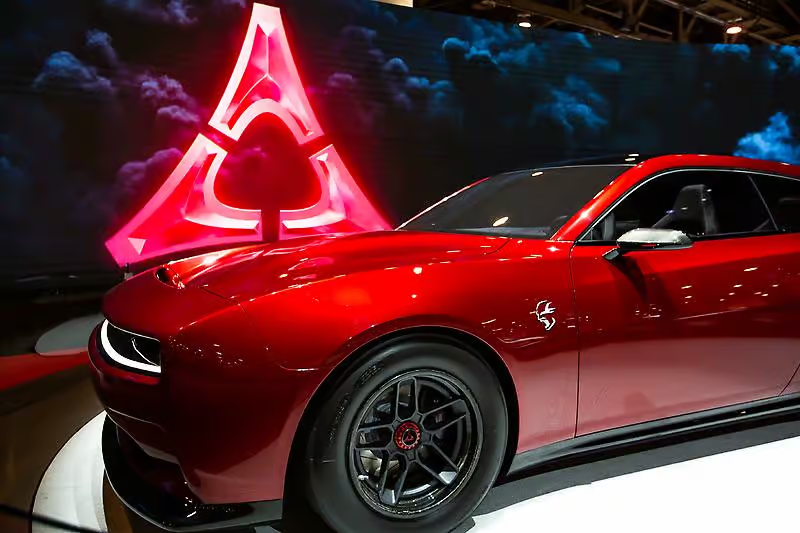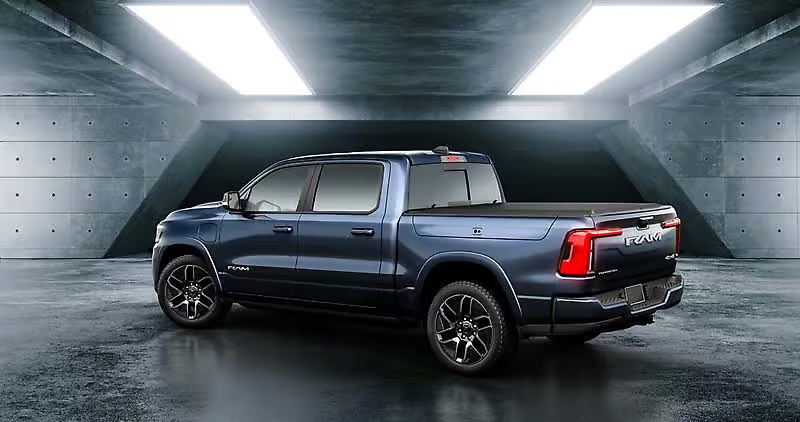Part 3 - Rumble to Hum: The Hemi's Future in the Electric Age

Rumble to Hum: The Hemi's Future in the Electric Age
Let's be brutally honest: the writing's on the wall for the traditional, gas-guzzling V8. The Hemi, as we've known and loved it, is facing a perfect storm of challenges. Tightening emission regulations, the global push for electrification, and shifting consumer preferences are all converging. But does this mean the spirit of the Hemi—that raw power and rebellious attitude—is dead? Not necessarily. It's evolving, adapting, and maybe, just maybe, finding a new way to roar.
Modern Hemi Technology: A Bridge, Not a Solution
The third-generation Hemi was a valiant effort to keep the V8 relevant in a changing world. Chrysler engineers pulled out all the stops:
Variable Valve Timing (VVT): Introduced in 2009, VVT was a crucial addition. It optimized valve timing based on engine load and speed, improving both power delivery and fuel efficiency. It wasn't just a gimmick; it was a genuine attempt to make the Hemi more adaptable.
Multi-Displacement System (MDS): This was Chrysler's answer to rising fuel prices and stricter CAFE (Corporate Average Fuel Economy) standards. MDS deactivates four cylinders under light load, essentially turning the V8 into a four-cylinder when cruising. It was a clever idea, but as we discussed in Part 2, it wasn't without its problems (the dreaded "Hemi tick").
Advanced Cooling and Lubrication: Modern Hemis have significantly improved oiling and cooling systems compared to their predecessors. This was essential for durability, especially in high-performance applications like towing or track use.
These technologies were band-aids, though. They helped the Hemi meet regulations for a while, but they couldn't fundamentally change the nature of a large-displacement, naturally aspirated V8. They were a bridge to the future, not the destination.
The Stellantis Shift: Electrification and the "Hurricane"

Stellantis, the parent company of Dodge, Ram, and Chrysler, made the big announcement in 2023: the Hemi V8 was being phased out. This wasn't a surprise to anyone paying attention, but it was still a significant moment. The reasons were clear:
Global Emission Regulations: Europe, China, and even California are implementing increasingly stringent emission standards. Large V8s, even with technologies like MDS, simply can't meet these targets without crippling performance. The cost of compliance becomes prohibitive.
The Rise of Electric Vehicles: EVs are no longer a niche market; they're going mainstream. Tesla proved that electric cars could be fast, desirable, and (relatively) practical. Every major automaker is now investing billions in electrification.
Stellantis isn't abandoning performance, though. They're just changing the way they deliver it. Here's what's on the horizon:
- The Dodge Charger Daytona SRT Banshee: This is Dodge's first all-electric muscle car, and it's a big deal. It's built on Stellantis's STLA Large platform, designed specifically for EVs. The Charger Daytona uses a 400-volt architecture and offers, at a minimum, two different power outputs (initially). The base R/T model is aiming for 496 hp, and the Scat Pack jumps to a staggering 670 hp. Dodge states other variants with even more power are planned in the future. It is believed that a high performance version, SRT Banshee, is in the works as well.

"Fratzonic Chambered Exhaust": Now this is where Dodge is trying to capture the feeling that muscle cars evoke. The Daytona EV generates a 126dB sound reminiscent of their gas powered counterparts, adding some familiarity into electric cars!
The Ram 1500 REV: Ram is also going electric with the 1500 REV, built on the STLA Frame platform. This truck promises impressive capabilities, with a targeted range of up to 500 miles with the larger 229 kWh battery pack, 654 horsepower, and a 0-60 mph time of around 4.4 seconds. It's clear that Ram isn't sacrificing performance in the transition to electric.

- The Hurricane Inline-Six: While Stellantis is heavily focused on EVs, they're also offering a new internal combustion engine as a transitional option: the 3.0-liter twin-turbocharged "Hurricane" inline-six. This engine, introduced in 2022, is designed to deliver V8-like power with better fuel economy and lower emissions. There are two main versions: a standard output (SO) version making around 420 horsepower and a high-output (HO) version producing up to 550 horsepower in applications like the Ram 1500 RHO and Jeep Grand Wagoneer. The Hurricane is an all-aluminum design with direct injection and two turbos, each feeding three cylinders.
The Regulatory Landscape: Tariffs, EPA, and CARB
Update: The EPA and Carb have been rolled back to levels around the 1960s. This means engine manufacturers can produce unrestricted and more reliable motors. It will be interesting what kind of power levels we’ll be seeing.
The future of the automotive industry, and the fate of engines like the Hemi, isn't just about technology—it's also about politics. The regulatory landscape is constantly shifting, and recent developments could have a significant impact:
- Stellantis Manufacturing Shift: In a move to address potential tariff concerns and streamline production, Stellantis has been shifting vehicle manufacturing back to the United States. This included moving some Ram 1500 production from Mexico to their Warren, Michigan plant, along with expansions and retooling at facilities like the Belvidere Assembly Plant in Illinois and the Toledo Assembly Complex in Ohio. These actions are intended to fortify the supply chain and avoid high costs, but consumers should also benefit from better vehicles.
Potential Rollbacks of EPA Regulations: In late January of 2025, Trump rolled back emission standards put in place. He also paused federal funds meant to grow EV charing capabilities in the nation.
CARB: CARB still has an obligation and pressure to reduce emissions, however it’s difficult. While it maintains significant influence over California's emission standards, there are potential efforts from people in politics to dismantle, or to significantly weaken CARB. This is likely to meet considerable legal resistance, the status of its waiver under the Clean Air Act.
The Hemi's Legacy: More Than Just Metal
Even if the traditional Hemi V8 fades away, its legacy is secure. It's not just about horsepower and torque; it's about a feeling. It's about the rumble that shakes your chest, the surge of power that pins you to your seat, and the rebellious spirit that defines American muscle.
The Hemi powered legends, from the 'Cudas and Chargers of the muscle car era to the modern-day Hellcats and Demons. It's been featured in countless movies, songs, and video games. It's a cultural icon, and that's not going to change overnight.
The future of performance might be electric, but the spirit of the Hemi—that pursuit of raw power and unapologetic attitude—will live on. It might take a different form, but the essence will remain. Whether it's the instant torque of an electric motor or the scream of a high-strung, turbocharged engine, the thrill of driving something special will always be at the heart of the Mopar legacy. The big question is: Can electric vehicles create the raw, soulful, passionate following? The future isn't defined yet.
But the Hemi is more than just a collection of engineering challenges and future powertrains; it's a cultural icon. In Part 4, we'll explore the Hemi's lasting impact on popular culture and its enduring legacy.

